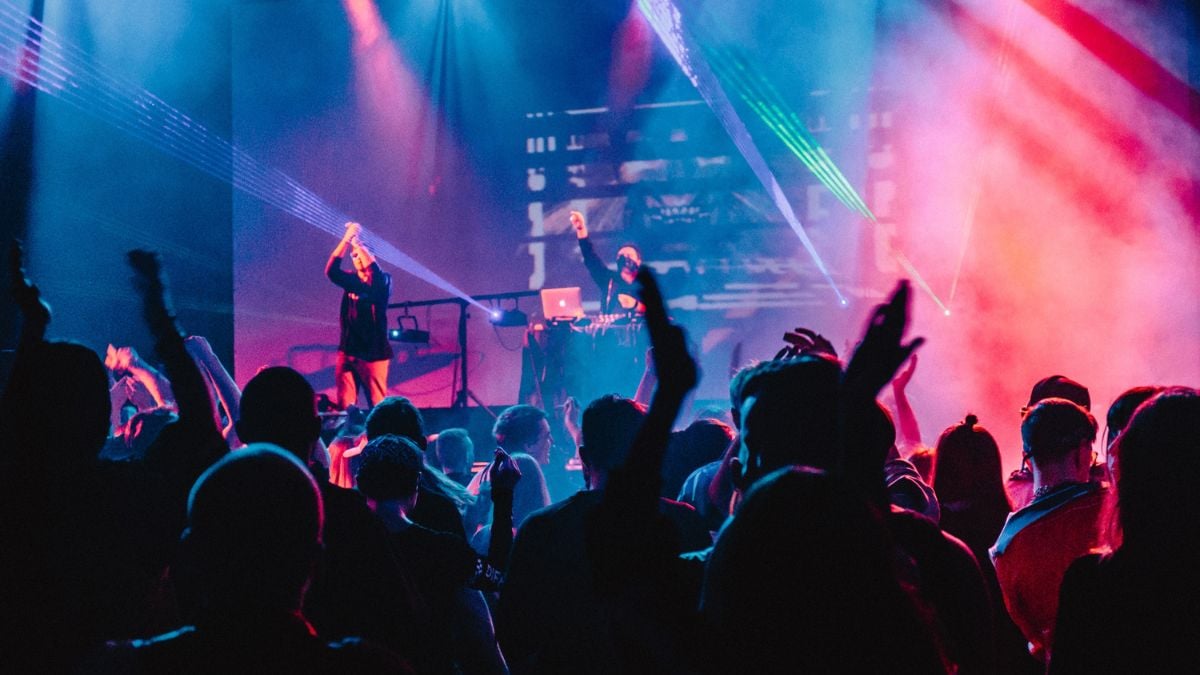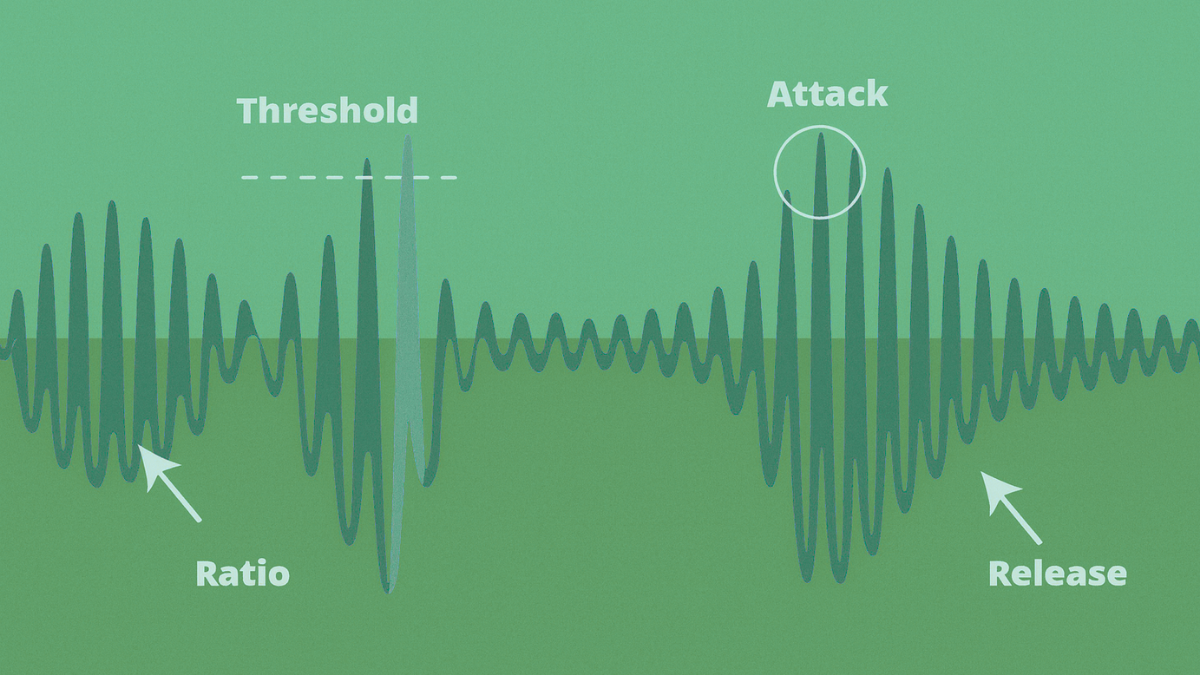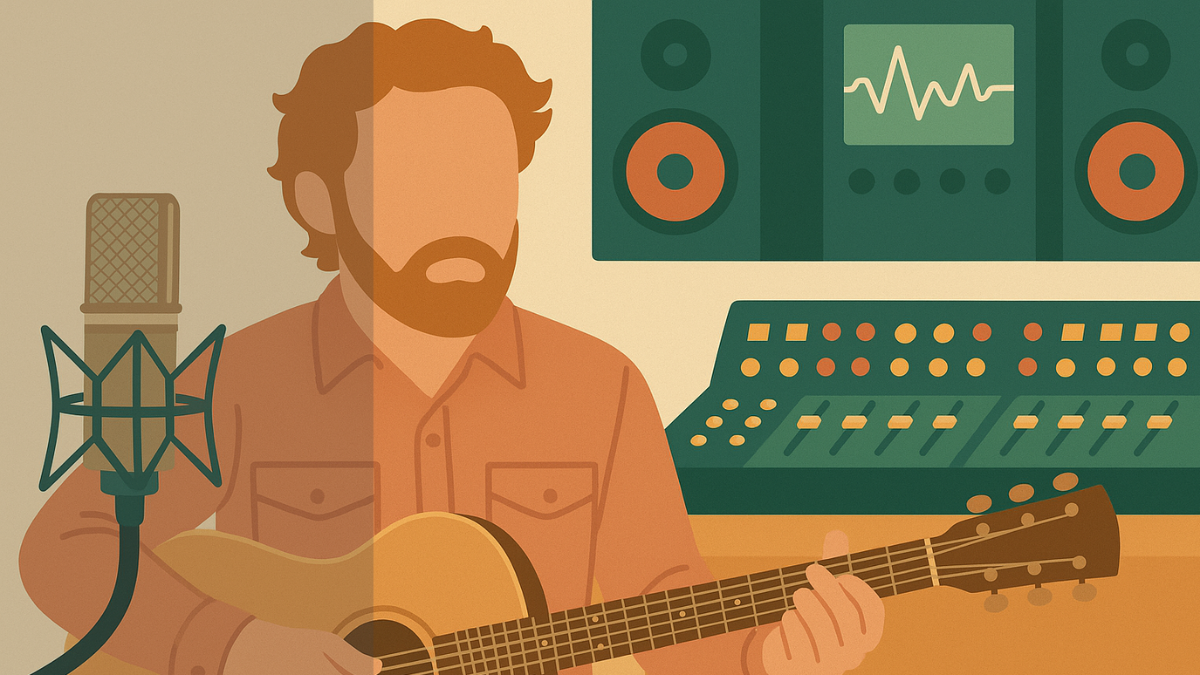How to Self-Release Music? A Guide for Independent Artists

If you’re an indie artist, you may have a team of three – “me, myself, and I.” This means you have to handle every aspect of releasing music.
So to help you not miss any step in the process, this article will help you figure out if your mix is professional and how to get your track mastered. Then you’ll learn how to create eye-catching cover art and how to distribute your music.
How To Make Sure Your Song Sounds Professional
This may be obvious, but you can consider this a helpful reminder. Follow these steps to make sure your song sounds at least as professional as all the other music out there…
- Record well: the foundation of a professional track is great engineering
- Get a professional mix
- Ask for feedback from someone who knows what a pro mix sounds like
- Master your track to professional standards (see next section)
The Importance of Mastering
Mastering is the final step in preparing your music for distribution, and its main goal is to make your music sound as good as possible on all types of playback systems. This means your music will sound great whether it’s coming through nice monitors, earbuds, or the car stereo of a ‘97 Toyota Corolla. The most notable change will be that the whole track sounds louder, loud enough to match the noise level of other professionally mixed and mastered songs.
During mastering, a mastering engineer uses techniques to balance the levels and frequencies of the mix, get rid of unwanted noise or distortion, and add any final processing or effects to enhance the overall sound. This can involve adjusting the EQ, compression, stereo imaging, and limiting, just to name a few.
The result of mastering is a polished and cohesive final track that’s ready for distribution. Without mastering, music distributors and streaming platforms most likely won’t accept your music. And your music just won’t sound as good as the music you and everyone else listen to.
You need to master your music before you release it.
How To Create Cover Art
Once your song is mixed and mastered, you need to create some cool-looking artwork. It’s a visual interpretation of your song, so it’s important to put some thought into it. Below are some platforms that make this process easy.
Canva
Canva is a cloud-based graphic design tool that offers a bunch of customizable templates that you can edit as needed. Whether you have zero ideas for your artwork or a clear vision, Canva is a super useful tool. You can even upload your own files and use Canva as a graphic editor.
Adobe Express
Adobe Express Free is also cloud-based and offers a lot of templates that you can edit. You can upload your own files too. Canva and Adobe Express Free are pretty much the same tools, the main difference is that they each have their own unique templates and designs.
DALL-E
DALL-E is an artificial intelligence engine that creates images based on your specific text prompts. You can use DALL-E to generate an image in the style you want based on your prompt. The best part is that you can use the images created by DALL-E commercially, which means you can use them for both cover art and merch.
Photo + VSCO
Another easy option is to take an album cover photo with your phone and then edit it in the VSCO app. It has a bunch of cool filters that’ll make your artwork look professional, all with just a couple of finger taps.
The Top 4 Music Distributors
Now your song is ready to be released! Here are four of the best music distributors to check out…
DistroKid
Tons of indie artists praise DistroKid as the best distributor. And they definitely have some great features, like 0% commission, payment splitting, lyric distribution, and credits distribution.
However, on top of their yearly fee, they do have upfront fees for certain services. And their revenue reports aren’t great.
But DistroKid works really well for a lot of artists, so they’re worth checking out.
CD Baby
CD Baby was the first non-label music distributor. They’re unique because they cover both digital and physical distribution, which is nice if you’re looking to distribute vinyl. They offer one-time payments for distribution, as opposed to an annual fee, which is popular among other music distributors.
On the downside, they do take a commission, they don’t offer payment splitting, and they don’t distribute lyrics or credits. However, they deliver to pretty much every music distribution platform. Overall, a solid option.
Tunecore
Tunecore offers distribution for an annual fee, and you keep 100% of the streaming royalties (but they keep 20% of the revenue from social platforms). And their revenue reports are very clear and detailed. Plus, they will distribute your lyrics and song credits to streaming platforms.
The biggest downside is they don’t offer payment splitting.
Soundrop
Soundrop is perfect for artists who want to release cover songs. They will obtain a mechanical license for you, for which you pay them a small fee.
But it’s also a great option for releasing original music. Releasing a song costs just $0.99, and there’s no cost for re-releasing a previously released song (ex. if you’re putting out a greatest hits album). They do offer payment splitting and they do distribute song credits.
On the downside, they take a commission, one of the highest in the business.
How To Build a Launch Strategy
Now let’s build you a music launch strategy!
Waterfall release vs. all at once
A waterfall release is when you have a batch of songs to share, but you put them out one at a time. This allows you to gradually release all the songs as a singular project while also giving each song its own time to shine.
Frequent, consistent releases also help trigger the Spotify algorithm, which tells Spotify to show your music to more people through algorithmic playlists.
You can also go the classic route of releasing an EP or album all at once. If you have creative and/or artistic reasons for doing this, then go for it. But from a marketing perspective, this usually makes the most sense when you already have a decent size audience who’s ready and willing to listen to an entire EP or album.
Pre-saves
There’s a debate among indie musicians and music marketers about pre-saves. Are fans tired of pre-saves? Do they actually help your song perform better than just promoting the song after it comes out?
The only way to know if it will work for you is to test it out on your next song. To run a pre-save campaign, you can see if your distributor offers it, you can use Show.co, or you can wait for Spotify’s Countdown Pages to become available to you.
Places to register your song
There are a few places you must register your song in order to collect all of the royalties you’re owed…
- Performance Rights Organization like BMI or ASCAP (performance royalties from live shows and TV placements)
- The MLC or a publishing admin company like Songtrust (mechanical royalties from streaming)
- SoundExchange (digital performance royalties from places like Pandora and SiriusXM)
Building anticipation
Building anticipation among your followers can help your release have a strong first day. But don’t just say “Hey my new song is coming out!” No one cares, so you have to give them a reason to care.
The best way to do this is to create valuable content around the release. Here are some ideas you could try:
- Live performance of the song
- A snippet of the official music video
- Tell the story of the inspiration behind the song
- Show some behind-the-scenes footage of you creating the song
- Offer a special gift to those who pre-save the song
These are just ideas. Ultimately, you have to build anticipation in a way that’s authentic to you.
How To Prepare For a Successful Release Day
Here’s what you need to do in preparation for your big release…
Create an EPK (for press and music venues)
An Electronic Press Kit (EPK) is a page on your website where you can send music industry people. So when you try to get a blog write-up or book a music venue, you would send your contact to this single page.
What should be in your EPK? At a minimum, you should include:
- Your artist bio: include both a short version that introduces you, describes your music, and your biggest achievements and a longer version that tells your story
- Your music: make them streamable within the EPK so they stay on the page
- Professional photos: use hi-resolution images so music industry people can use for promo
- A video: embed your best video, whether it’s an official music video or a live performance
- Contact info: make it easy for a someone to find your contact info (or the contact info of your manager)
- Social media links: add 3-4 social media links
Submit to playlists
Spotify really wants to keep their listeners happy by suggesting music that they’ll love. To do this, they use a bunch of metrics, including:
- Minimal skips
- Repeat streams
- High follower-to-listener ratio
- High save-to-stream ratio
- Number of playlists adds
- Your name in the press
- Song shares
If you want to improve your chances of getting on algorithmic playlists, like Radio and Discover Weekly, here are some different methods to try:
- SubmitHub and/or Groover: pay-to-submit platforms that can get your song in front of playlist curators
- The @gmail.com method: in Spotify, search for playlists with “[your genre/mood] @gmail.com” and you’ll find playlisters who have listed their submission email in the playlist description
- TikTok and Instagram: search for playlist curators by looking through hashtags, like #songrecommendations, #underratedsongs, #musicdiscovery, #songsuggestions, #songsilike, #spotifyplaylist
Submit to influencers
Through the aforementioned SubmitHub and Groover, you can submit your song to social media influencers. The way it works is, you pay a small fee to submit. If the influencer vibes with your song, they’ll make a video that features it. This could be a great way to get your song in front of a whole new audience by using social proof.
Email and message your audience
If you don’t have an email list, you should really look into getting one. It’s the easiest way to speak to your fans directly. Collect emails at shows, put a form on your website, link it in your social media bios – make it an obvious option.
On top of that, you can message followers directly on social media. You’ll have to message followers individually, so just make sure you do it in an authentic way that’s not pushy or salesy.
Try something like:
“Hi [NAME]! I just released a song called [SONG TITLE] about [MEANING OF SONG]. I’m really excited about it, so I’m reaching out to a small handful of people to see if they’d be up for sharing it. If you want to help out, just post it on your IG stories and feature your fave part of the song. And please tag me! I’d be super duper grateful if you did. If not, absolutely no worries!”
Post on social media
This one is obvious, but what’s not so obvious is the fact that you have to tailor your content to the platform. For example, an Instagram story probably won’t work as a TikTok. Users on YouTube Shorts may want something different from Facebook users. So you have to learn what kind of content does well on each platform, then adjust your content as needed.
But either way, social media is the best way to get your music in front of your current followers as well as new potential fans.



Comment on this post on SoundGym Community